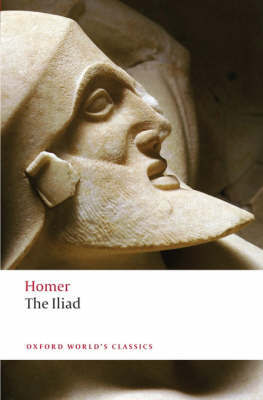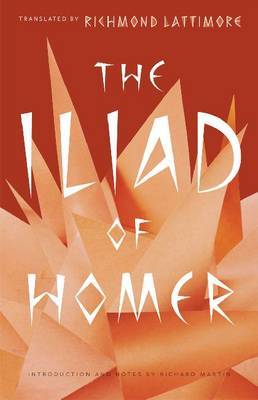Which Iliad should I read? – A guide to the translations of Homer’s Iliad


 It can be disorientating to say the least when you walk into a bookshop and see the sheer numbers of different translations of the Iliad on the shelf. How on earth are you supposed to pick one – and aren’t they all translations of the same text anyway?
It can be disorientating to say the least when you walk into a bookshop and see the sheer numbers of different translations of the Iliad on the shelf. How on earth are you supposed to pick one – and aren’t they all translations of the same text anyway?Does it really matter which one you choose?
Well, the answer to that is yes – and no. In the end, you’re reading Homer’s Iliad, and if you just want to cut to the chase and get to the content of the story then you will get the same timeless tale whichever translation you pick: the famous story of Achilles’ rage, the devastating siege of Troy, and Hector’s tragic death.
But, to me at least, the Iliad is so much more than just its plot. It’s the rhythm of the ancient Greek poetry, written in a dialect that would have sounded old-fashioned even by the time democracy came to Athens in around 500 BC. It’s the uniqueness of the epithets – ‘the wine-dark sea’, ‘swift-footed Achilles’, and all the other well-known collocations. It’s the sound of the words – and since I’m lucky enough to have studied ancient Greek, that’s something that I think really lies at the heart of the poetry.
I still remember the first time I really realised how amazing – just how unbelievably mind-blowing – it is to be reading the words of a poet who was writing over 2500 years ago. Just think about that. 2500 years! That’s more than twice the time that has passed between the Battle of Hastings in 1066 and now. And we’re still reading the words they wrote, the stories they told. I remember revising for my Greek GCSE at my grandparents’ house when it suddenly hit me – this is it! I’m reading Homer! I’m listening in to the past. And then I sat down and read aloud the opening lines of the Iliad, as they were meant to be heard – savouring every beat of the metre, every poetic word-choice, every formulaic phrase (glaukopis Athene is one of my favourites – ‘Athena with the grey-green eyes’).
And if you want to get a flavour of that, then you’ll have to look a little further.
Before I go into the different merits of each translation in next week’s post – and I’m not saying one is better than the other, only that you’ll get different things from each of them – I’ll dive into a quick example that should give you an idea of what a difference a translation can make.
At the beginning of book 16 of the Iliad, Patroclus, Achilles’ companion, comes to him weeping. Homer uses a simile to describe the flow of Patroclus’ tears (I’ve given you the transliterated Greek, and then a literal translation below):
dakrua therma cheón hós te kréné melanudros,
hé te kat’ aigilipos petrés dnoferon cheei hudór.
hot tears pouring like a spring of black water,
which down a goatless (i.e. steep) rock pours dark water.
Here are a couple of different translations of those lines, in no particular order: … streaming
warm tears – like a shaded mountain-spring
that makes a rock-ledge run with dusky water.
— Robert Fitzgerald … weeping,
His face like a sheer rock where the goat trails end
And dark springwater washes down the stone.
— Stanley Lombardo … wept warm tears, like a spring dark-running
that down the face of a rock impassable drips its dim water…
— Richmond Lattimore
… wept warm tears like a dark spring running down
some desolate rock face, its shaded currents flowing.
— Robert Fagles
You might say it doesn’t matter very much whether you compare the tears streaming down Patroclus’ face to a spring running down ‘a sheer rock where the goat trails end’ or ‘a rock-ledge’. You might even omit it entirely, as Christopher Logue does in Patrocleia. And of course it doesn’t affect the plot of the Iliad at all. But to me, there’s a huge difference between the prosaic ‘rock-ledge’ of Fitzgerald’s translation and Lombardo’s ‘sheer rock where the goat trails end’ – bringing out, as it does, the hidden resonances of the Greek word aigilipos, ‘left by goats’, meaning a mountain so steep that not even goats can climb it. To me, that single word provides us with a little glimpse into Homer’s world – a world where goats scrambled over rocks, their bells clanging at their necks, teetering on precipices over the deep valleys of Greece. With one word, we are thrown back into a peaceful world where the Greek soldiers were still simply farmers and herdsmen, tending to their flocks on the rugged hilltops of the Greek landscape. And the cause of Patroclus’ grief – the deaths of his comrades – suddenly becomes all the more poignant, because you know the life that they have lost.
In summary, then, it depends what you’re looking for – which Iliad you want to read. If you’re a newcomer to the ancient Greek world, searching for a fluent translation which gives you all the essentials of the Iliadic plot, you’ll probably want a different translation from someone who’s looking to read slowly and interpret every word for its nuances and impact on the poem’s interpretation.
Coming next week: a step-by-step how-to guide to the translations of the Iliad. Which translation of the Iliad do you like best, and why? Comment below or send me a tweet at @ehauserwrites – I’d love to hear from you!
Published on March 18, 2016 09:31
No comments have been added yet.



